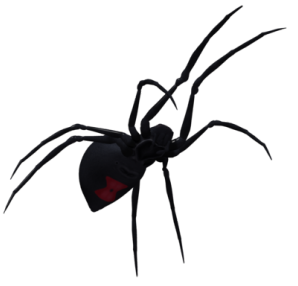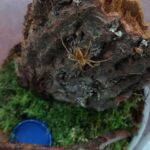Pisaura mirabilis (Nursery web spider)
Origin: Palearctic distribution (Europe, Canary Islands and Madeira, the Asian part of Russia, China and North Africa)
The Name:
The genus name “Pisaura” comes from Latin, referring to the spider’s agile and precise movements. The species name “mirabilis” means “marvelous” or “wonderful,” highlighting its remarkable behavior and appearance.
Natural Environment and Behavior:
The Nursery Web Spider, Pisaura mirabilis, is widely distributed across Europe and can be found in various habitats such as grasslands, meadows, and gardens. This spider thrives in environments with low vegetation, where it can hunt and build its characteristic nursery webs.
In its natural behavior, Pisaura mirabilis exhibits terrestrial tendencies, spending a significant portion of its time on the ground or low vegetation. Unlike many spiders, it does not use webs to catch prey. Instead, it actively hunts insects and other small invertebrates. Providing an environment in captivity that includes plants and low vegetation helps replicate its natural habitat and behaviors.
While generally not aggressive, this species can exhibit defensive behaviors, especially females guarding their egg sacs. Handling should be minimized to reduce stress and avoid defensive bites.
As an opportunistic feeder, Pisaura mirabilis preys on various small invertebrates in its native habitat. In captivity, it is typically fed live insects such as flies, crickets, or small roaches to meet its dietary needs. Its active hunting lifestyle means it spends considerable time moving about its enclosure.
To ensure the well-being of this spider in captivity, it is crucial to create an environment that accommodates its natural instincts, maintain a secure enclosure, and minimize handling.
Longevity:
Females can live up to 2 years, while males typically live around 1 year.
Size:
Body length ranges from 10 to 15 mm, with a leg span of up to 45 mm.
Husbandry:
Maintain humidity around 50-70% and temperature between 20-25°C. Use a mixture of soil, peat moss, and leaf litter to replicate the natural substrate. Including plants and twigs can provide necessary cover and support natural behaviors.
Enclosure Size:
For spiderlings, an enclosure approximately 5-10 cm in length and width is suitable. Juveniles should transition to an enclosure with dimensions of approximately 15-20 cm. Adults require dimensions of at least 30x30x30 cm to provide enough space for their active hunting behavior and to accommodate their nursery webs.

